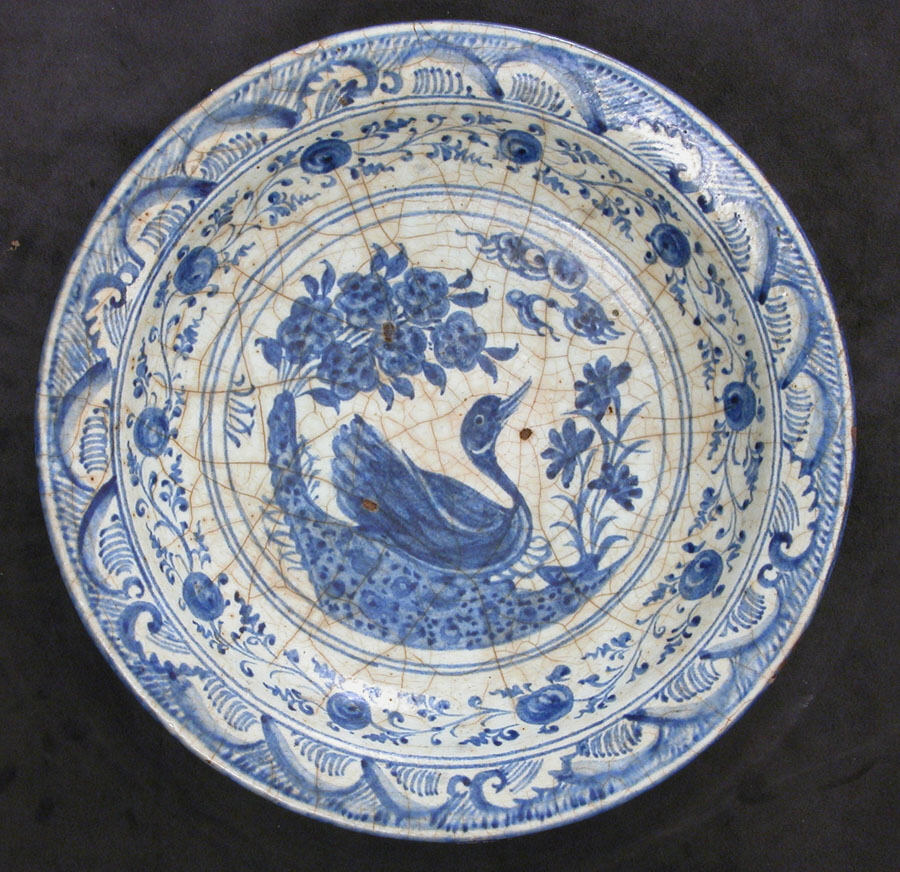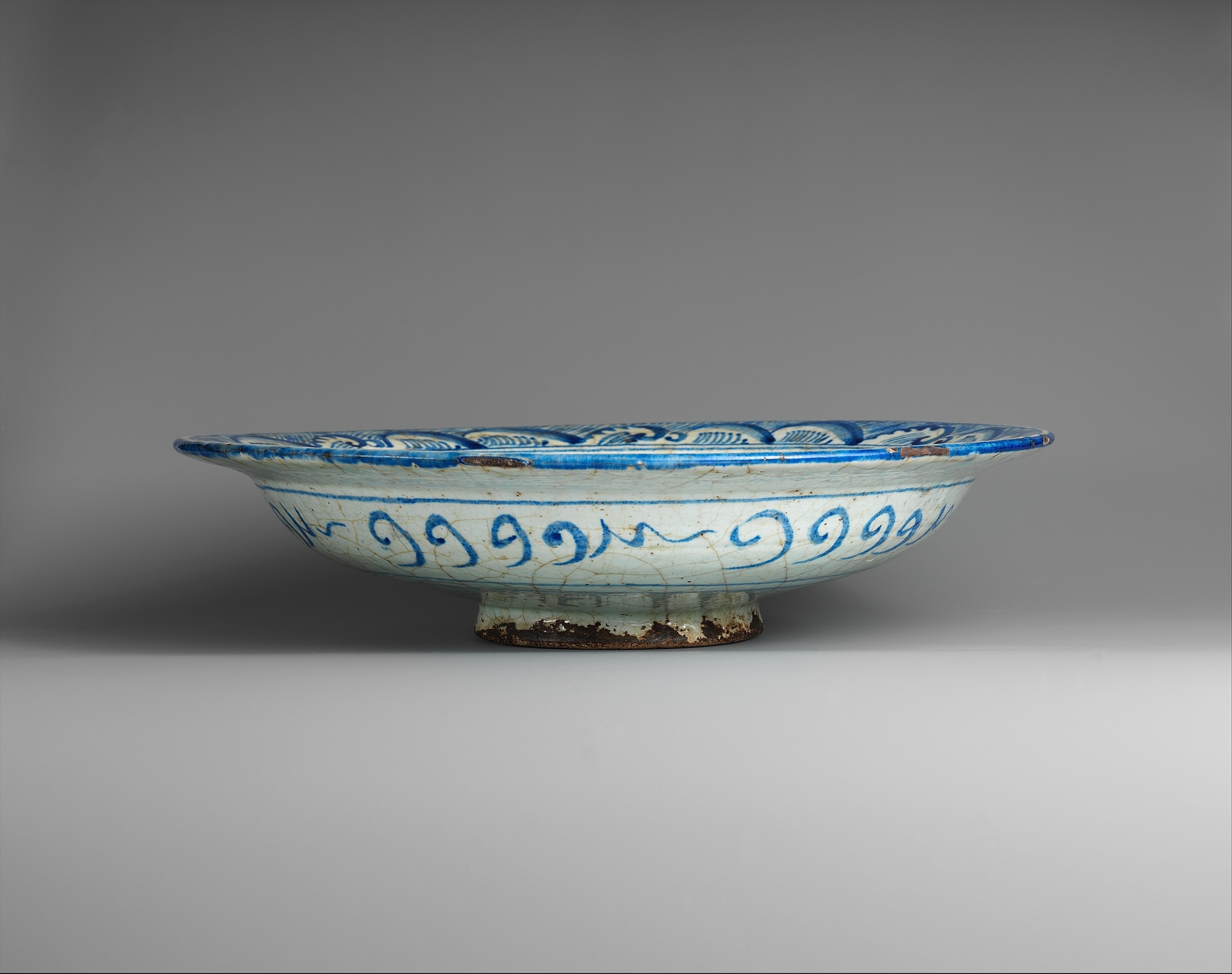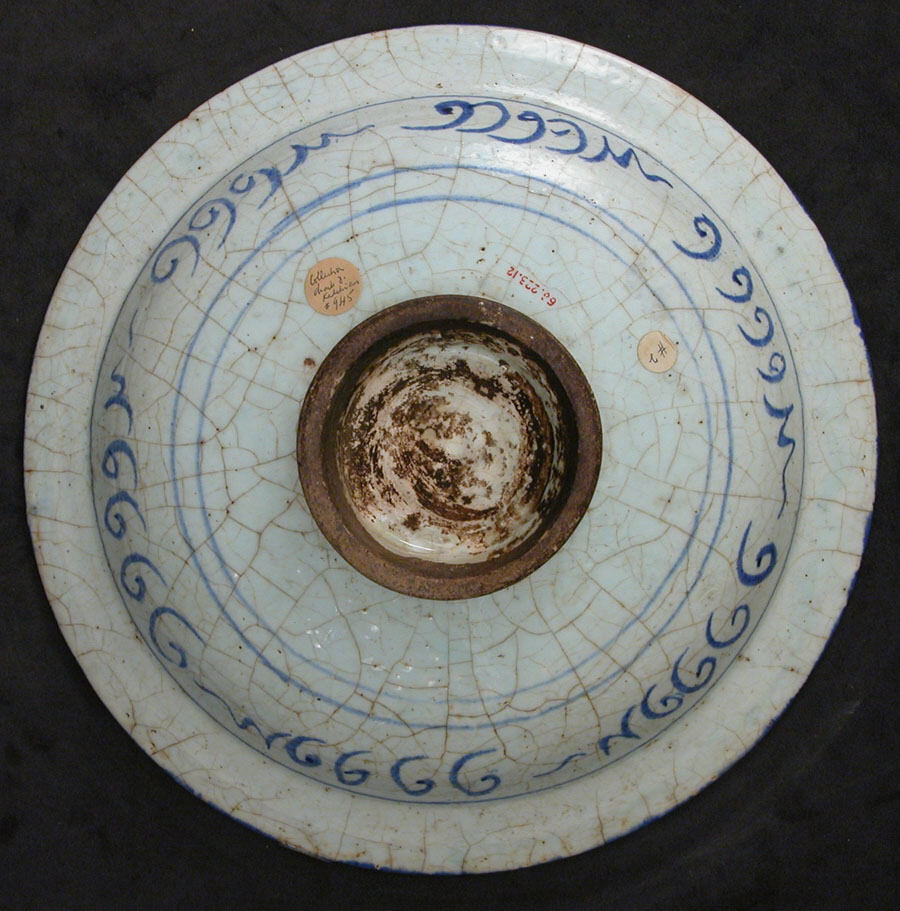Dish with a Swimming Duck
This dish belongs to a group of ceramics known as Kubachi ware. Named for a village in the Caucasus where this pottery was discovered in quantity, Kubachi wares are now thought to have actually been produced in Tabriz. One attribute of the Kubachi style is an uneven application of the glaze that has resulted in a surface-wide crackle. Dirt has seeped into the cracklure, discoloring the underlying body to a brownish tint.
Like so many ceramics produced in Iran during the Safavid period, the style and decoration of this dish demonstrates an attempt to emulate the highly-regarded Chinese porcelain. The wave pattern around the rim, the central imagery of a duck swimming, and the use of blue and white coloring, illustrate Chinese inspiration in this piece.
Due to rights restrictions, this image cannot be enlarged, viewed at full screen, or downloaded.
This artwork is meant to be viewed from right to left. Scroll left to view more.






